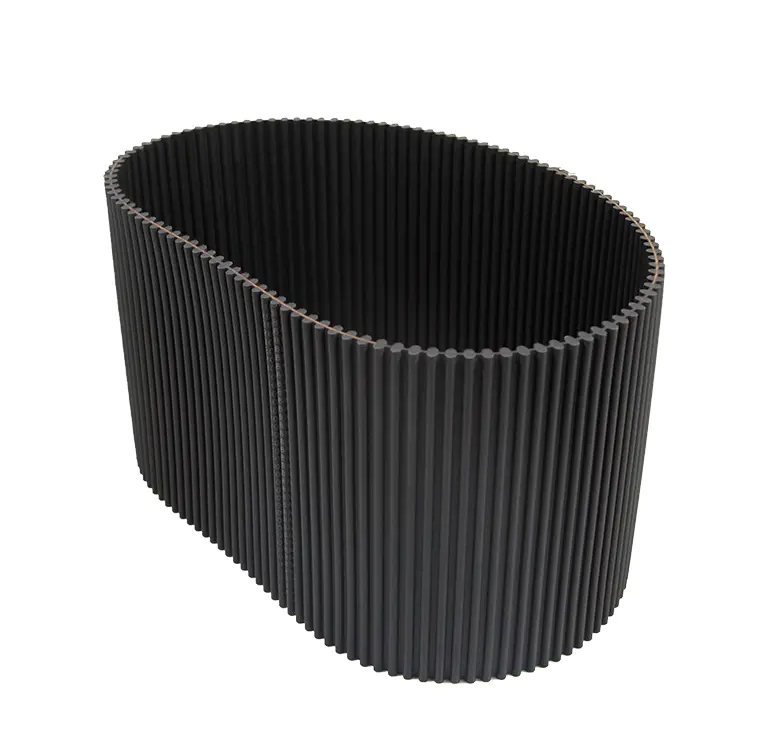Rubber timing belts are essential components in a wide range of mechanical systems

Rubber timing belts are essential components in a wide range of mechanical systems, particularly in automotive and industrial applications. They are used to synchronize the movement of various engine parts, ensuring that they operate in harmony. The timing belt is typically made from durable rubber material, often reinforced with fibers to improve strength and prevent stretching over time. The design of rubber timing belts allows for smooth, precise transmission of power, making them crucial in applications where accurate timing and consistent performance are needed.
In automotive engines, the rubber timing belt is responsible for connecting the crankshaft to the camshaft. This synchronization is vital because it ensures that the engine's valves open and close at the correct time in relation to the movement of the pistons. If the timing is off, it can lead to engine misfires, poor performance, or even engine damage. The rubber timing belt is specifically designed to withstand high levels of heat, friction, and pressure while maintaining its flexibility and strength, which is why it is commonly used in vehicle engines.
Beyond the automotive industry, rubber timing belts are also widely used in various industrial machinery, such as conveyors, machine tools, and packaging equipment. In these applications, the timing belt helps transfer motion between pulleys and ensures that moving parts work in a synchronized manner. This is particularly important in automated systems, where precision is necessary for efficient operation. A misaligned or worn-out timing belt can result in costly downtime or the need for repairs, making it important to regularly maintain and replace these belts as part of standard operational procedures.
Another key feature of rubber timing belts is their quiet operation. Unlike metal gears, which can create noise and vibration, rubber timing belts operate smoothly and quietly. This makes them particularly suited for applications where noise reduction is a priority, such as in household appliances or laboratory equipment. In addition, the flexibility of rubber allows it to accommodate slight misalignments, which can further contribute to its smooth performance.
In conclusion, rubber timing belts are integral components in both automotive and industrial machinery. Their ability to transfer motion accurately and quietly, while withstanding wear and heat, makes them a preferred choice in many applications. Whether used to keep an engine running smoothly or to drive machinery in a factory setting, rubber timing belts play a crucial role in ensuring the efficient and reliable operation of various systems.
- Art
- Causes
- Crafts
- Crypto
- Dance
- Drinks
- Defi
- Film
- Fitness
- Food
- Jocuri
- Gardening
- Health
- Home
- Literature
- Music
- Networking
- Alte
- Party
- Religion
- Shopping
- Sports
- Theater
- Wellness

